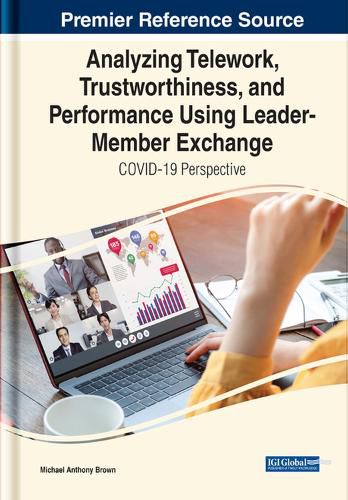Readings Newsletter
Become a Readings Member to make your shopping experience even easier.
Sign in or sign up for free!
You’re not far away from qualifying for FREE standard shipping within Australia
You’ve qualified for FREE standard shipping within Australia
The cart is loading…






This title is printed to order. This book may have been self-published. If so, we cannot guarantee the quality of the content. In the main most books will have gone through the editing process however some may not. We therefore suggest that you be aware of this before ordering this book. If in doubt check either the author or publisher’s details as we are unable to accept any returns unless they are faulty. Please contact us if you have any questions.
This book focuses on rules for teleworking generated by the coronavirus pandemic (COVID-19) that exist without a national strategy. The research goes further to address implications for everyday situations, many that already existed before the pandemic. The research offers an opportunity to take a new look at teleworking in all situations regardless of the reasons that make it necessary or prudent. This book addresses telework issues and answers: trustworthiness, performance, productivity, employee risk, achievement, accountability, emotional intelligence, and radical change. It addresses the need for and the existence of a shared understanding where leaders and employees openly discuss the challenges presented by teleworking. It also asks whether there are impediments or obstacles that organizations could remove or reduce to enable employees to accomplish the same amount of work they are currently doing in the office, but in a shorter duration of time while teleworking.
This work conducts a deeper evaluation of telework than is currently available in relevant literature so that we can understand how to build strengths and mitigate weaknesses in trustworthiness and performance as they are applied in organizational development. The evaluation begins with a description of the current state of teleworking. This examination identifies plans and resources that can be used to improve teleworking tomorrow. This book also collects and analyzes LMX - leader-member exchange - to ensure the lens of evaluation is focused on all parties from member to leader to CEO. It examines whether organizations have made decisions to mandate or encourage teleworking formally and informally, making the possibility of participation available to the whole organization.
$9.00 standard shipping within Australia
FREE standard shipping within Australia for orders over $100.00
Express & International shipping calculated at checkout
This title is printed to order. This book may have been self-published. If so, we cannot guarantee the quality of the content. In the main most books will have gone through the editing process however some may not. We therefore suggest that you be aware of this before ordering this book. If in doubt check either the author or publisher’s details as we are unable to accept any returns unless they are faulty. Please contact us if you have any questions.
This book focuses on rules for teleworking generated by the coronavirus pandemic (COVID-19) that exist without a national strategy. The research goes further to address implications for everyday situations, many that already existed before the pandemic. The research offers an opportunity to take a new look at teleworking in all situations regardless of the reasons that make it necessary or prudent. This book addresses telework issues and answers: trustworthiness, performance, productivity, employee risk, achievement, accountability, emotional intelligence, and radical change. It addresses the need for and the existence of a shared understanding where leaders and employees openly discuss the challenges presented by teleworking. It also asks whether there are impediments or obstacles that organizations could remove or reduce to enable employees to accomplish the same amount of work they are currently doing in the office, but in a shorter duration of time while teleworking.
This work conducts a deeper evaluation of telework than is currently available in relevant literature so that we can understand how to build strengths and mitigate weaknesses in trustworthiness and performance as they are applied in organizational development. The evaluation begins with a description of the current state of teleworking. This examination identifies plans and resources that can be used to improve teleworking tomorrow. This book also collects and analyzes LMX - leader-member exchange - to ensure the lens of evaluation is focused on all parties from member to leader to CEO. It examines whether organizations have made decisions to mandate or encourage teleworking formally and informally, making the possibility of participation available to the whole organization.